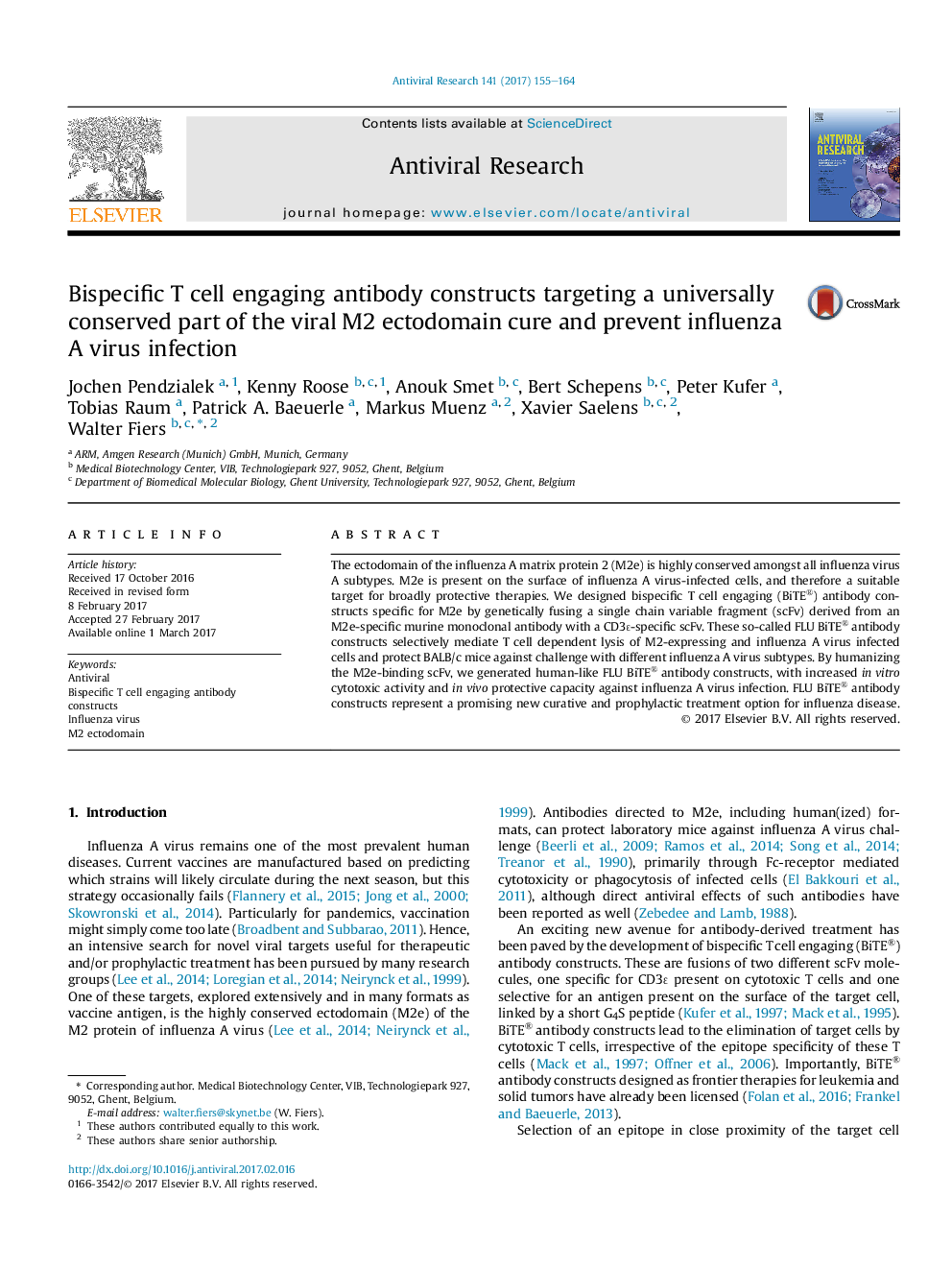| Article ID | Journal | Published Year | Pages | File Type |
|---|---|---|---|---|
| 5551809 | Antiviral Research | 2017 | 10 Pages |
â¢Bispecific T cell engaging (FLU BiTE®) antibody constructs targeting the M2 ectodomain of influenza A were constructed.â¢FLU BiTE® antibody constructs show strong cytotoxic activity to M2-expressing cells in vitro.â¢In vivo, FLU BiTE® antibody constructs protect mice against influenza A virus, providing memory T cells are present.â¢Humanized FLU BiTE® antibody constructs display increased affinity for M2e, resulting in stronger protective effects.
The ectodomain of the influenza A matrix protein 2 (M2e) is highly conserved amongst all influenza virus A subtypes. M2e is present on the surface of influenza A virus-infected cells, and therefore a suitable target for broadly protective therapies. We designed bispecific T cell engaging (BiTE®) antibody constructs specific for M2e by genetically fusing a single chain variable fragment (scFv) derived from an M2e-specific murine monoclonal antibody with a CD3É-specific scFv. These so-called FLU BiTE® antibody constructs selectively mediate T cell dependent lysis of M2-expressing and influenza A virus infected cells and protect BALB/c mice against challenge with different influenza A virus subtypes. By humanizing the M2e-binding scFv, we generated human-like FLU BiTE® antibody constructs, with increased in vitro cytotoxic activity and in vivo protective capacity against influenza A virus infection. FLU BiTE® antibody constructs represent a promising new curative and prophylactic treatment option for influenza disease.
